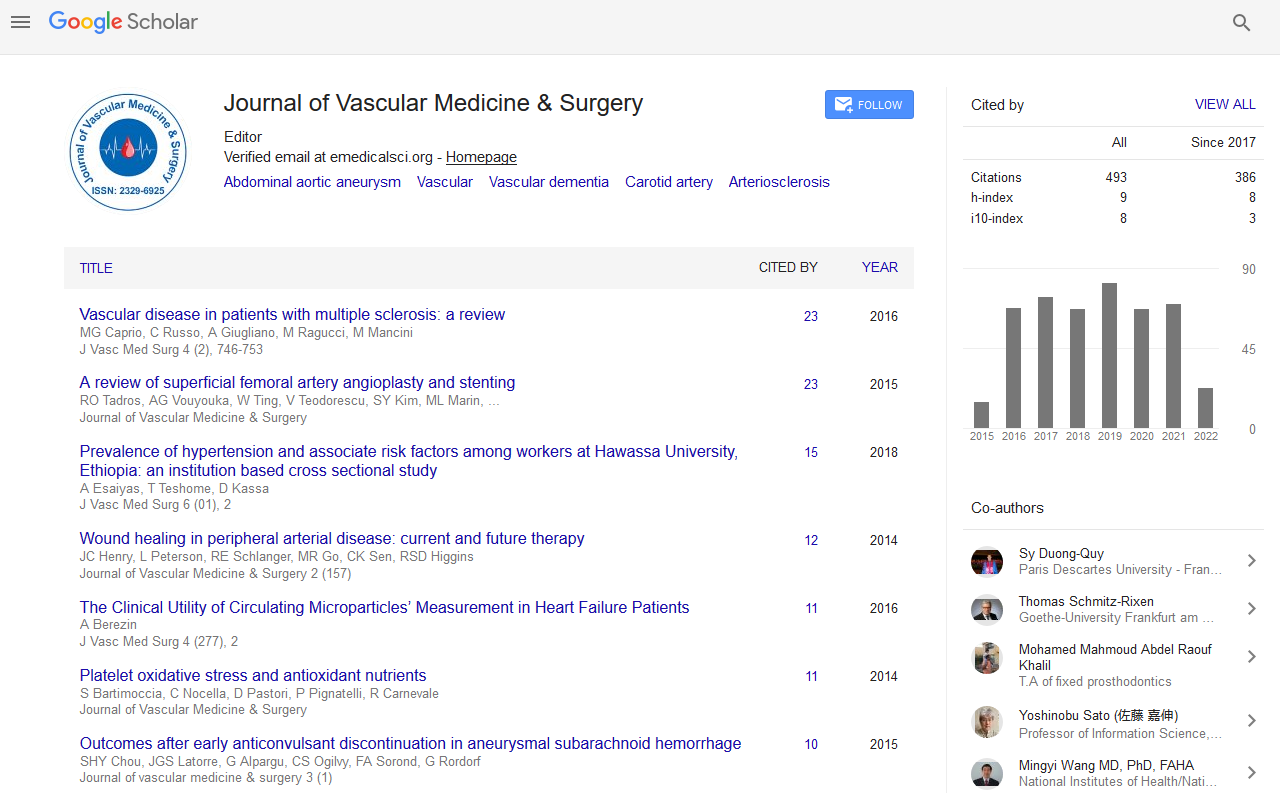Indexed In
- Open J Gate
- Academic Keys
- RefSeek
- Hamdard University
- EBSCO A-Z
- OCLC- WorldCat
- Publons
- Euro Pub
- Google Scholar
Useful Links
Share This Page
Journal Flyer

Open Access Journals
- Agri and Aquaculture
- Biochemistry
- Bioinformatics & Systems Biology
- Business & Management
- Chemistry
- Clinical Sciences
- Engineering
- Food & Nutrition
- General Science
- Genetics & Molecular Biology
- Immunology & Microbiology
- Medical Sciences
- Neuroscience & Psychology
- Nursing & Health Care
- Pharmaceutical Sciences
Abstract
A Combined Therapy Protocol to Improve Lower Extremity Muscle-Pumping Function and Lymphatic Drainage for Venous Ulcer Healing
Eduardo Simões Da Matta, Rodrigo Kikuchi, Clodoaldo Antônio De Sá, Sinval Adalberto Rodrigues-Junior and Amanda Naiara Gustman
Objectives: To conduct a registry-based evaluation of a therapy protocol for chronic venous ulcers involving the improvement of lower extremity muscle-function along with lymphatic drainage and inelastic compression.
Method: We observed sixty-five patients with lower extremity venous ulcers secondary to chronic venous insufficiency until the end of treatment or the last available follow-up. The treatment protocol involved a series of sequential exercises with short-stretch bands performed thrice weekly: An hour of lymphatic drainage preceded each exercise session, associated with lymphomyokinetic passive activities using the RB3030 device. All patients underwent inelastic compression either with an Unna boot or with short-stretch bands. Perimetry was conducted at two different levels of the foot, and at five distinct levels of the leg, using a regular commercial tape. The ulcer wound was photographed along with an object with a pre-established, standard dimension. The area of each wound was then estimated through the Imagej software (National Institutes of Health) using a freehand drawing surrounding its border. Generalized linear models measured the association between therapy and outcomes, including the change in ulcer area, time-until-healing, and foot and ankle perimetry.
Results: Most of the patients were female, with 20% presenting a diagnosis of diabetes mellitus, 66.2% of hypertension, and 3.1% presenting signs of arterial insufficiency. Ulcer location was similarly distributed across sides (23.1% vs. 21.5), demonstrating similar percentages of previous deep vein thrombosis (9.2% on the right and 6.2% on the left side). Average healing time was 37.24 days. Most ulcers (95.7%) healed within the study period. Compared to their counterparts, patients with greater than 22 degrees of ankle range of motion presented an improved reduction in ulcer area size: 1.78 (1.56, 2.03) versus 2.85 (2.23, 3.64), respectively.
Conclusions: Therapies involving combined muscle strengthening, lymphatic drainage and compressive inelastic therapy should be part of chronic venous ulcer treatments.


